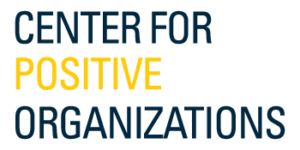This short case is one of eight in a series of cases written for the Next Great Companies in Michigan project, which profiles great places to work in Michigan. The case profiles Google, in particular Google’s Ann Arbor, Michigan office, and its ability to attract and retain Generation Y workers. The Ann Arbor office was founded in 2006 to support Google’s revenue-generating AdWords business. The office started with eight employees and was slated to grow to one thousand over the next five years. The case discusses Google’s success factors in attracting young talent, and gives insight into how the company’s unique culture has helped it land the coveted #1 spot on Fortune magazine’s “Best Places to Work” list.
The Y in Google: Attracting and Retaining the Millennials
by: Lynn Wooten
Publication Date: March 1, 2009
Length: 8 pages
Product ID#: 1-428-756
Core Disciplines: Information - Technology & Management, Leadership/Organizational Behavior
Available Documents
Click on any button below to view the available document.
Don't see the document you need?
Don't See the Document You Need?
Make sure you are registered and/or logged in to our site to view product documents. Once registered & approved, faculty, staff, & course aggregators will have access to full inspection copies and teaching notes for any of our materials.
Make sure you are registered and/or logged in to our site to view product documents. Once registered & approved, faculty, staff, & course aggregators will have access to full inspection copies and teaching notes for any of our materials.
$1.95
Need to make copies?
If you need to make copies, you MUST purchase the corresponding number of permissions, and you must own a single copy of the product.
Electronic Downloads are available immediately after purchase. "Quantity" reflects the number of copies you intend to use. Unauthorized distribution of these files is prohibited pursuant to term of use of this website.
Teaching Note
This product does not have a teaching note.
Description
Teaching Objectives
After reading and discussing the material, students should:
- describe appropriate business terms and principles approriate to this case,
- apply critical concepts from earlier learning to define a solution to the case,
- successfully articulate data and information in support of the solution proposed,
- critically analyze and discuss other responses and solutions to the case,
- draw lessons from the case analysis,
- generalize the learnings of this case to other business challenges and decisions in organizations other than the one analyzed in this case study,
- demonstrate leadership and scholarship in analysis.

